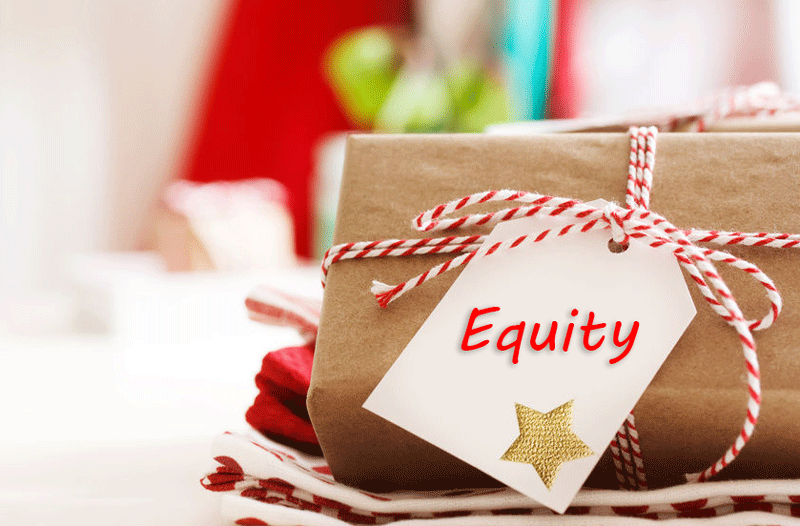The biggest holiday gift this year for millions of Americans doesn’t fit under a tree and can be a little hard to grasp, but it may be of exceptional value: If you own a home, the odds are good that your equity holdings increased by thousands of dollars over the past 12 months.
New quarterly data released by the Federal Reserve reveal that American homeowners’ equity grew by $1.02 trillion in the 12-month period ending Sept. 30. A giant national number like that may glaze your eyes and be difficult to relate to personally, but calculations made by analytics and valuation tech firm CoreLogic bring it down to earth: The average owner saw a $12,500 gain in equity last year.
In hot real estate markets on the West Coast, the average was $25,000-plus.
How did your house fare? Unless you follow listings and sales closely in your neighborhood, you might have missed what’s been happening to your own equity.
Property values jumped in the past 12 months in most major markets primarily because of rising prices fed by low interest rates and tight inventories of homes.
Nationwide they were up 5.8 percent year-over-year, according to CoreLogic. Reductions in mortgage principal debts through regular amortization played a role, as did refinancings by owners into loan types with shorter terms — mainly 15 years — and faster payoffs of principal. Renovations of homes pushed up values as well.
Unfortunately, not everybody saw gains. Zillow, the online real estate marketplace and research site, reported last week that more than one in 10 owners in the U.S. continue to have negative equity, but that figure has plunged by nearly two-thirds during the past 48 months as the economy has strengthened. And it’s still falling. CoreLogic says 384,000 homeowners with mortgages transitioned from negative to positive equity positions during the latest quarter alone.
That’s great. But assuming you’ve been a beneficiary, what do you actually do with the “gift” of greater equity? Here are two strategies:
No. 1: Be happy. Don’t touch it. Your equity may well be the largest component of your household wealth, and it could continue to grow over time. If you have no urgent need for spendable cash, don’t unwrap this gift.
No. 2: Tap into it. If you do have a responsible use for some of your equity gains, explore your options for liquefying them. The most popular and low-cost way is to take out a home equity credit line or HELOC. As a general rule, lenders will let you borrow up to 80 percent (some go to 90 percent) of your “combined loan to value” ratio or “CLTV.” That means the sum of your current mortgage indebtedness plus the amount you want to borrow relative to the market value of your home.
Say you have a house worth $400,000 with a $200,000 outstanding balance on your primary mortgage. An 80 percent CLTV comes to $320,000, giving you potentially up to $120,000 available to borrow against via an equity credit line. That may be much more than you need for projects such as remodeling the kitchen, consolidation of high interest rate credit card balances, paying off student loan debt or funding an investment in a business venture. But it’s good to know you’ve got that cushion of cash in reserve.
Terms on HELOCs remain attractive, despite the increase in interest rates for all mortgage products since the November elections. As of Dec. 16, according to listings on Bankrate.com, you could find starting rates on a $30,000 credit line as low as 3.24 percent (Third Federal Savings and Loan Association of Cleveland), 3.75 percent from Pentagon Federal Credit Union (if you qualify as a member) and 5.75 percent from TD Bank.
Most lenders are looking for solid credit scores (minimum 700 FICO; higher strongly preferred) and tie their adjustable rates to the prime rate. Some lenders charge annual fees and require a minimum drawdown of funds when you open the line.
Many banks also offer fixed rate second mortgages — home equity loans as opposed to floating-rate credit lines — that are fully amortizing over periods ranging from five years to 20 years. Current rates range from the low 4 percent range to 5 percent and up, depending on payback terms and credit quality.
Bottom line: If you think your equity grew in the past year, and you have a solid purpose in mind, tap away. Rates are widely expected to rise in 2017.
